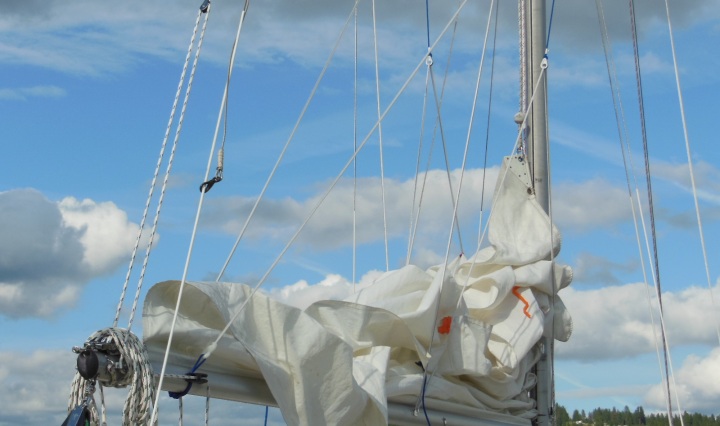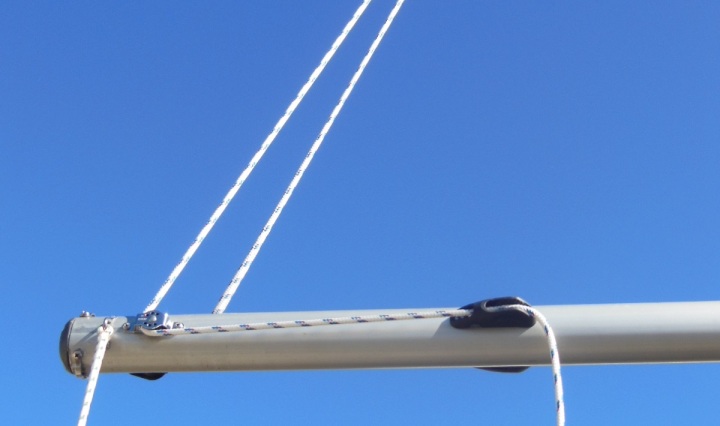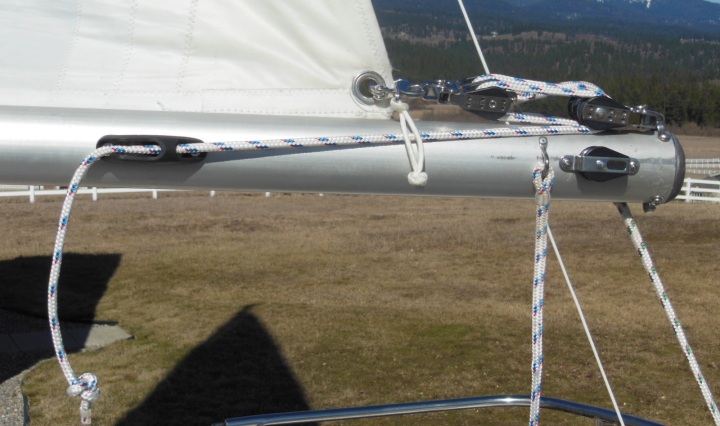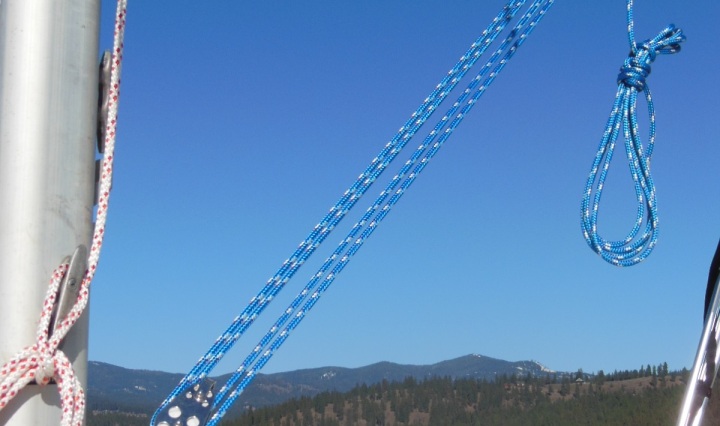
Make This Boom Tent: the Poor Man’s Bimini
It’s a cloudless mid-summer afternoon. You’ve had a great day of sailing but you’re ready to drop anchor, start dinner, and relax for another stunning sunset. You’ve been in the sun all day so some shade would be great but you don’t have a bimini on your sailboat. You don’t really want to go down into the cramped cabin yet. The first mate will be making dinner and you’d just be in the way.





